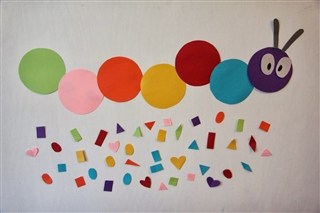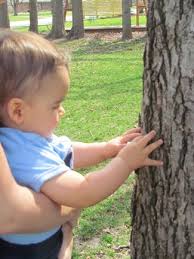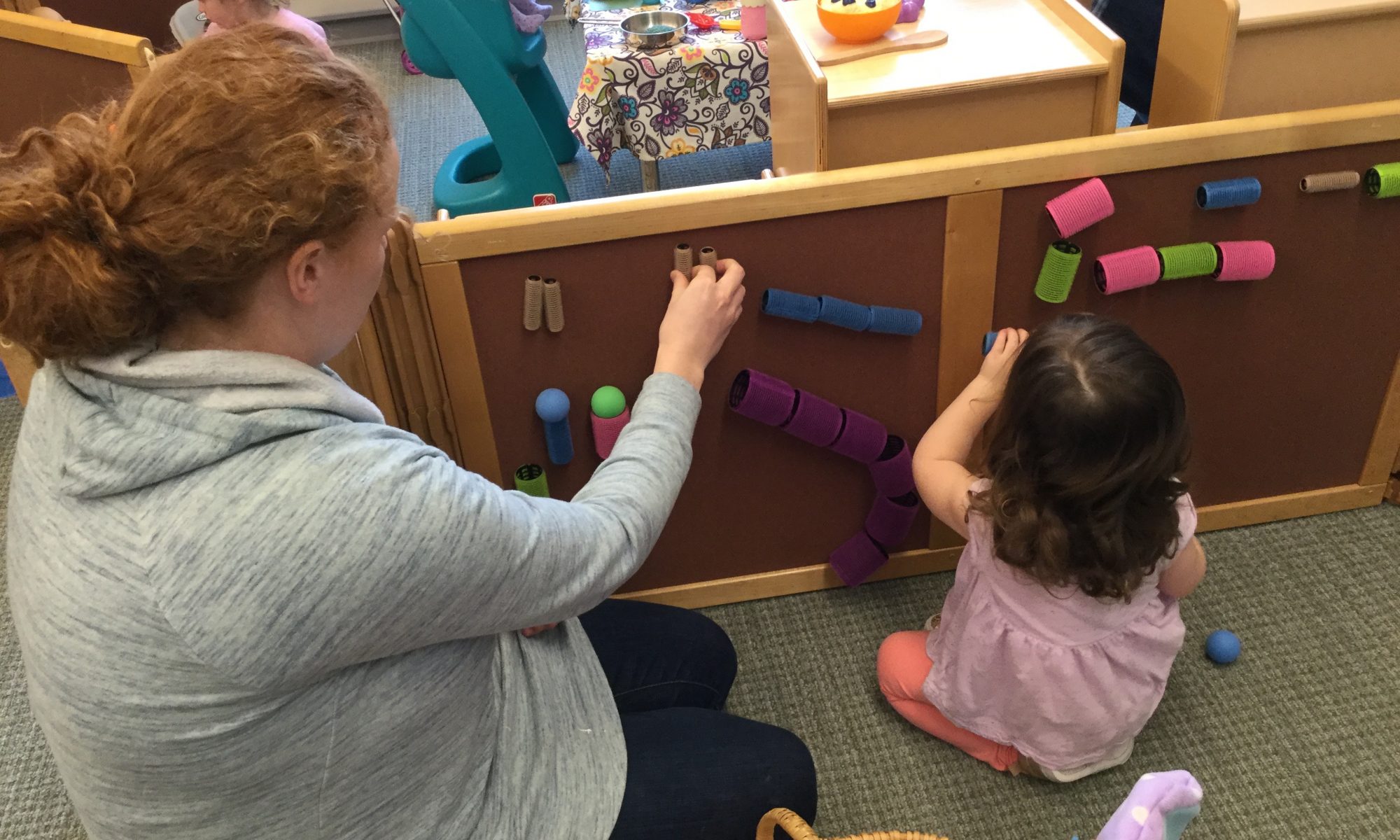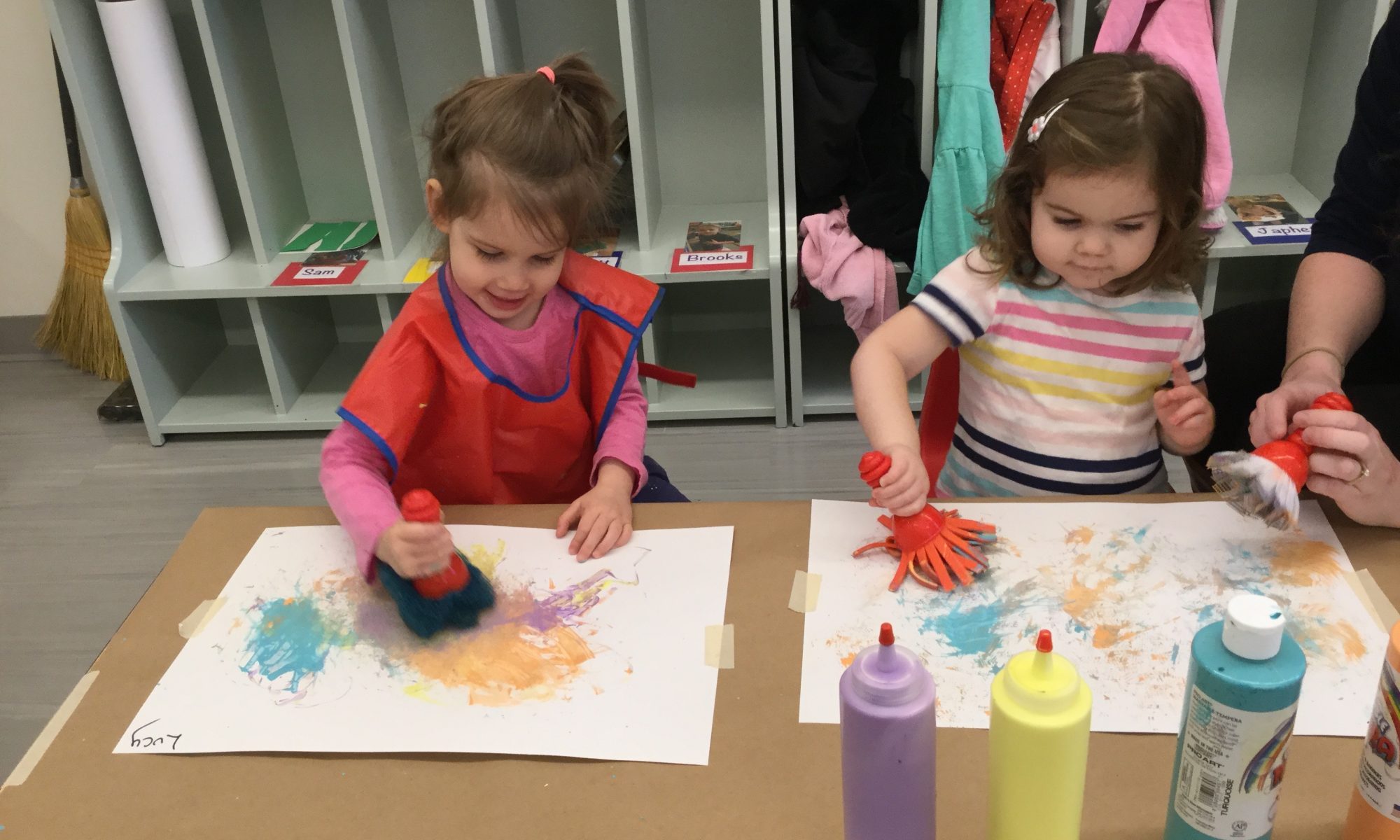Materials
Craft foam in various colors
Scissors
Painters tape
Markers
Large Googly eyes (optional)
Large piece of poster board to stick the calerpillar on
Directions
Use the inside of the roll of painters tape to trace one circle on each color of craft foam. Cut out the circles. Use the scraps to make additional shapes – small triangles, circles, squares, rectangles. Tape the circles onto the poster board to make a caterpillar shape. Add eyes- either hand drawn or googly eyes and antennas to the head. Invite your child to match the colors of the shapes to the color sections on the caterpillar. Review the names of the shapes and colors as the shapes are sorted.
Lesson Extensions for Preschoolers
- Write upper case letters on the caterpillar circles and lower case letters on the various shapes. Match lower case to upper case letters.
- Draw dots on the circles of the caterpillars; write numerals on the shapes. Match the numeral to the number of dots.
- Write numerals 5-10 on the circles of the caterpillars. Encourage your child to use addition skills to add two numbers together on the shapes that equal a numeral on the caterpillar










